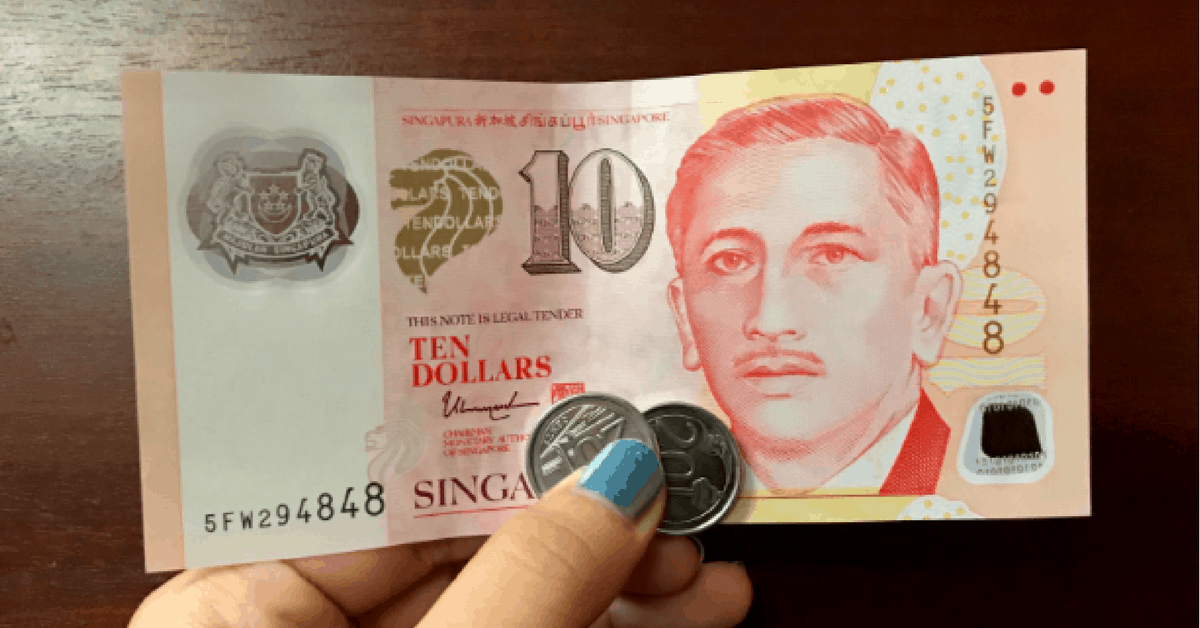Imagine living on only $10.40 a day – that’s the reality for approximately 500,000 people in Singapore. According to The Department of Statistics, the amount needed for basic living expenses is estimated at $1,250 per month, per household. In 2011, 10 to 12% of households fall under this level.
I decided to try for myself if living on $10.40 a day would be manageable, and decided to limit my expenses for a week.
Before I embarked on this journey, I looked through my camera roll, Instagram feed and monthly reviews from Wally, the personal finance app I’ve been using for a reality check of my current expenditure.
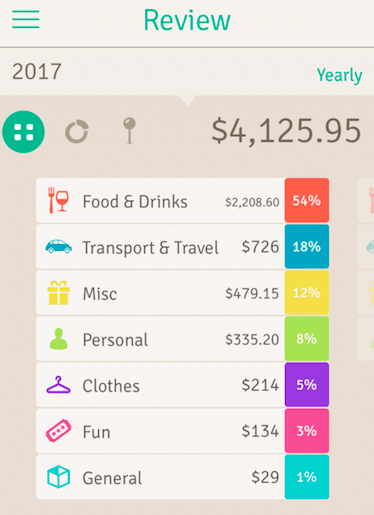
It turns out that in 2017, I had spent a total of $4,125.95, with 54% spent on food and drinks. Scrolling through the list, I noticed that a good deal of my money had been exchanged for truffle fries and other food items from various cafés.
On hindsight, it seems ridiculous to spend $25 to $30 on a casual meal when there are so many affordable and tasty options around.
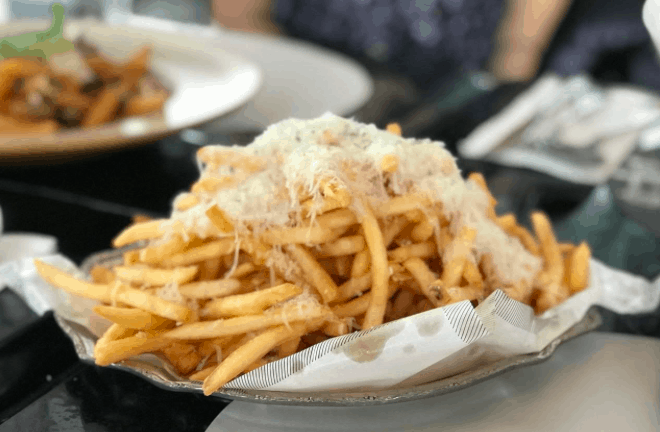 This week, I tried to maximise variety in my food choices, and brought my own water bottle out to reduce additional expenditure on drinks.
This week, I tried to maximise variety in my food choices, and brought my own water bottle out to reduce additional expenditure on drinks.
My Wally records show that the daily $1.50 to $2.50 spent on milo peng and bottled water could well be saved, and bringing my own bottle around helps to reduce plastic waste as well!
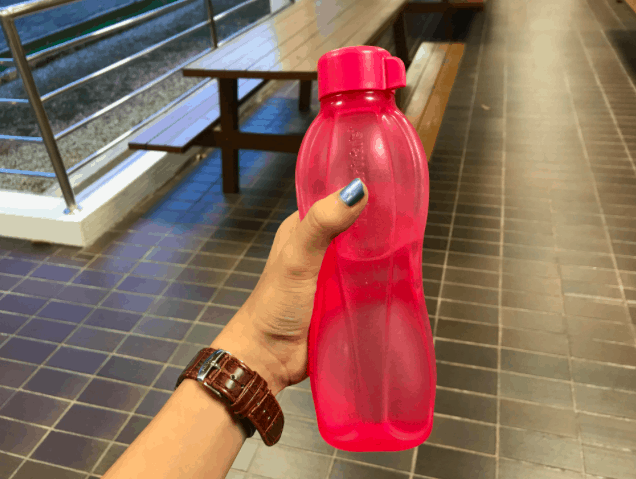
Initial Thoughts
Keeping my daily expenditure to $10.40 a day required some planning and research on where to eat, especially on days where I was meeting my friends for dinner.
I also had several concerns, since I was looking at an average of $3.40 a meal. I wondered if I might end up having to eat the same things everyday, or if I would be a spoilsport while making dinner plans with my friends.
Here’s How My Week Went:
Monday
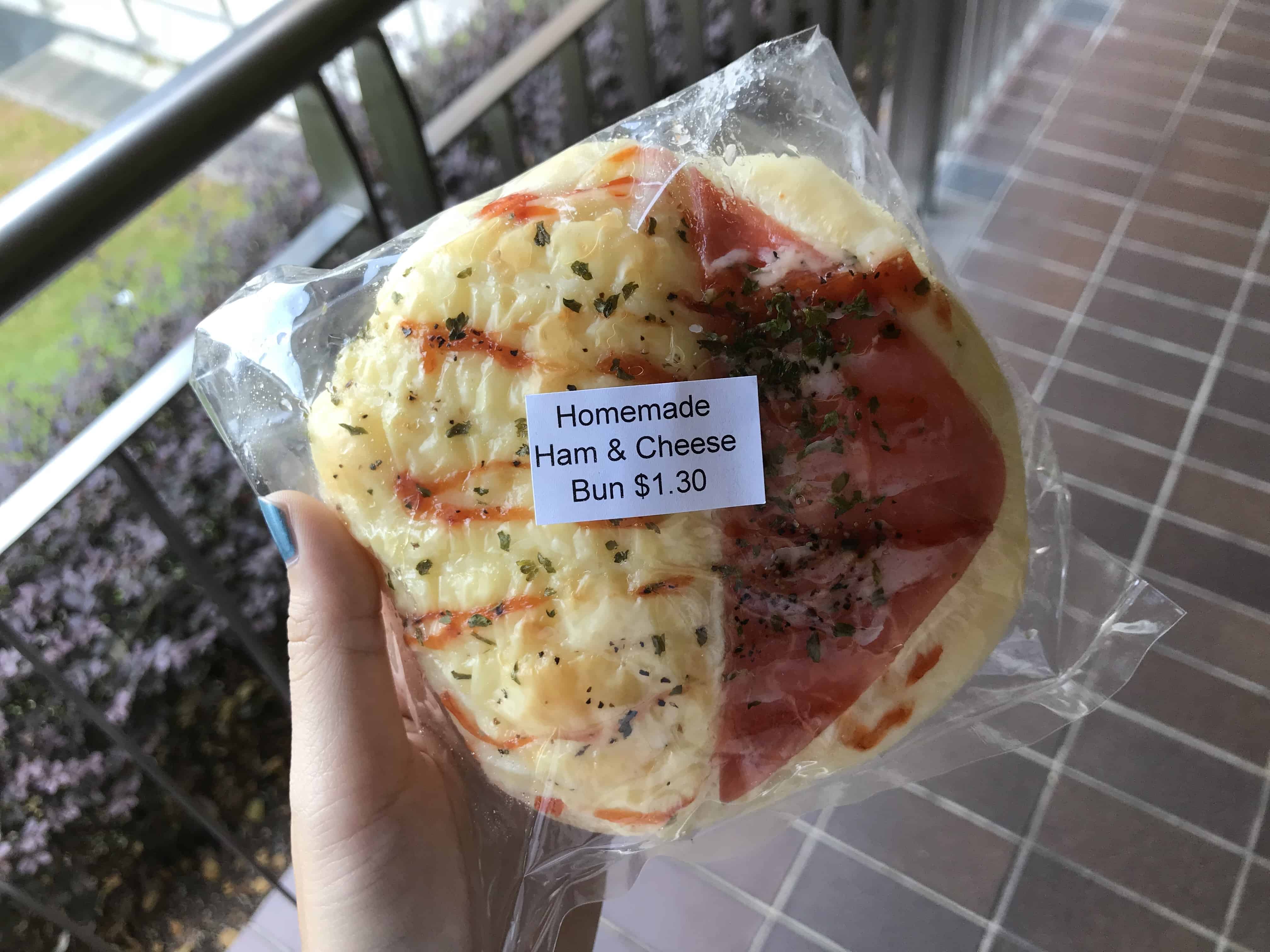 Breakfast: Ham & Cheese Bun, $1.30
Breakfast: Ham & Cheese Bun, $1.30
I started my week with an individually-wrapped bun, which is super convenient to eat on the go. Alternatively, you can grab a bun from Breadtalk or the small neighbourhood bakeries.
Since most bakeries drop their prices after 9pm, you might be able to grab 3 pieces of bread for as little as $1.
 Lunch: Yong Tau Fu, $3.60
Lunch: Yong Tau Fu, $3.60
Peek into any food court or coffee shop in Singapore, and you’re likely to spot a Yong Tau Fu (YTF) stall. For approximately $3.50, you’ll get 5 items, a staple and a bowl of tasty soup made with soybeans and ikan bilis.
It’s technically possible to have YTF for lunch everyday, since you can switch up the clear soup for laksa soup base, or savoury-sweet sauce. In addition to its attractive price, YTF surprises you with more variation than you’d expect.
 Dinner: Lemon Chicken Rice, $3
Dinner: Lemon Chicken Rice, $3
Instead of my usual roasted chicken rice, I opted for chicken cutlet with lemon sauce from the food court. Served with soup, chicken rice can be found almost everywhere, and a plate of this goodness is bound to satisfy your growling stomach.
Tuesday
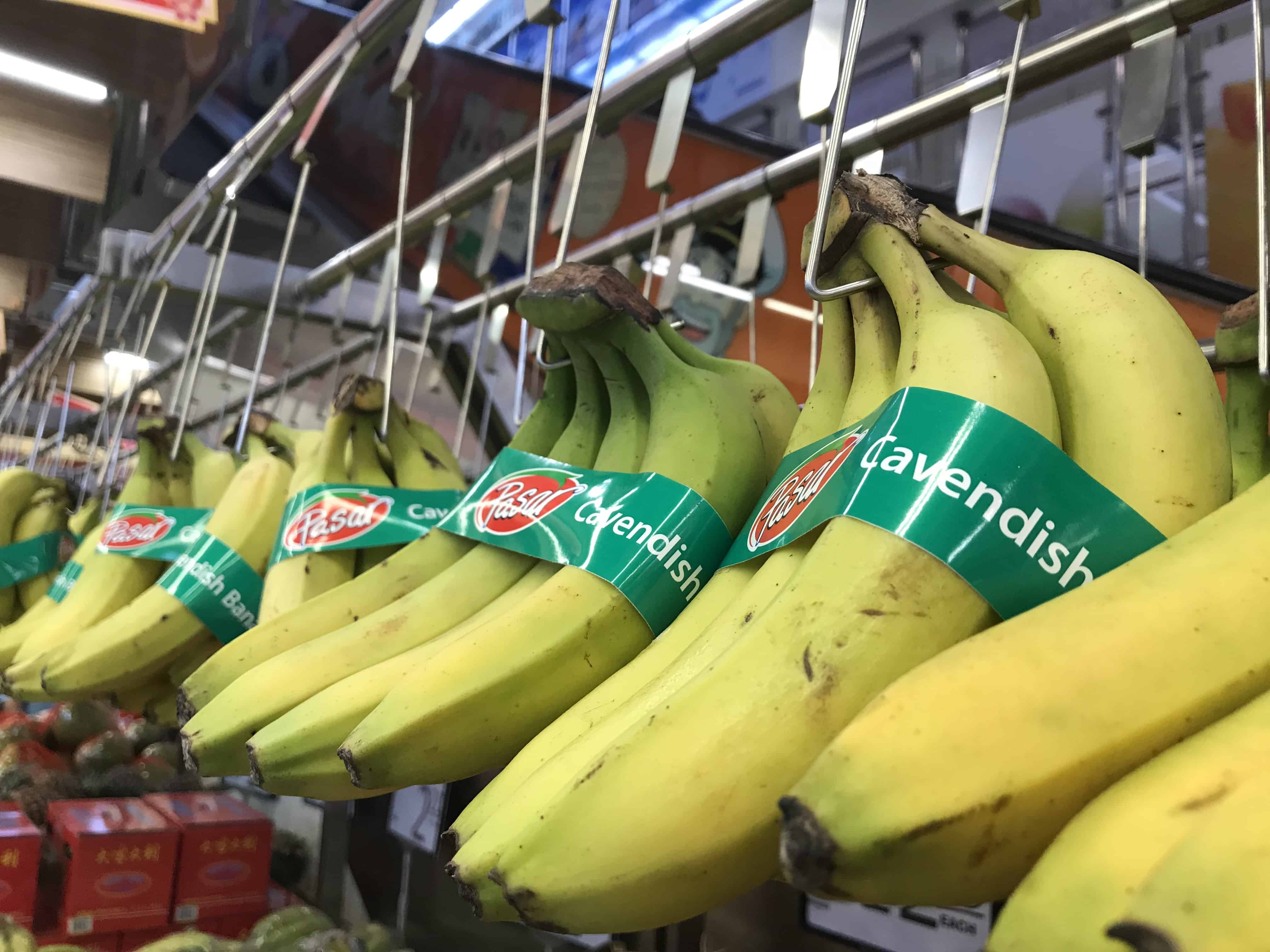 Breakfast: Banana, ~40c/ piece.
Breakfast: Banana, ~40c/ piece.
As an instant energy booster, bananas make the perfect breakfast, especially when you’re in a rush. They’re packed with vitamins and nutrients like calcium, potassium and iron, and contain lots of fibre to keep you feeling full for a long time.
Since bananas are sold in bunches of around 5 pieces for $1.95, it became my go-to breakfast or snack option for the week.
 Lunch: Ramyun, $3.50 (Hwang’s Korean Restaurant)
Lunch: Ramyun, $3.50 (Hwang’s Korean Restaurant)
I know, instant noodles aren’t the healthiest option around. But I was craving something Korean and ramyun offers just the right amount of spice to fit the bill.
While most Korean eateries are pretty expensive, there are some hidden gems around, only if you know where to look.
 Snack: Paddle Pop Ice Cream, $1.20 (Mama shop or Vending Machine)
Snack: Paddle Pop Ice Cream, $1.20 (Mama shop or Vending Machine)
I’ve already had instant noodles for lunch, so I might as well treat myself to a midday snack. Swap your atas gelato (~$4/ scoop) for humble old-school ice cream flavours like Paddle Pop and Solaro, which are bound to take you straight back to your childhood days.
If you’re lucky, you might even spot the well-loved Ice Cream Uncle with his cart containing slabs of Raspberry Ripple and Mint ice cream.
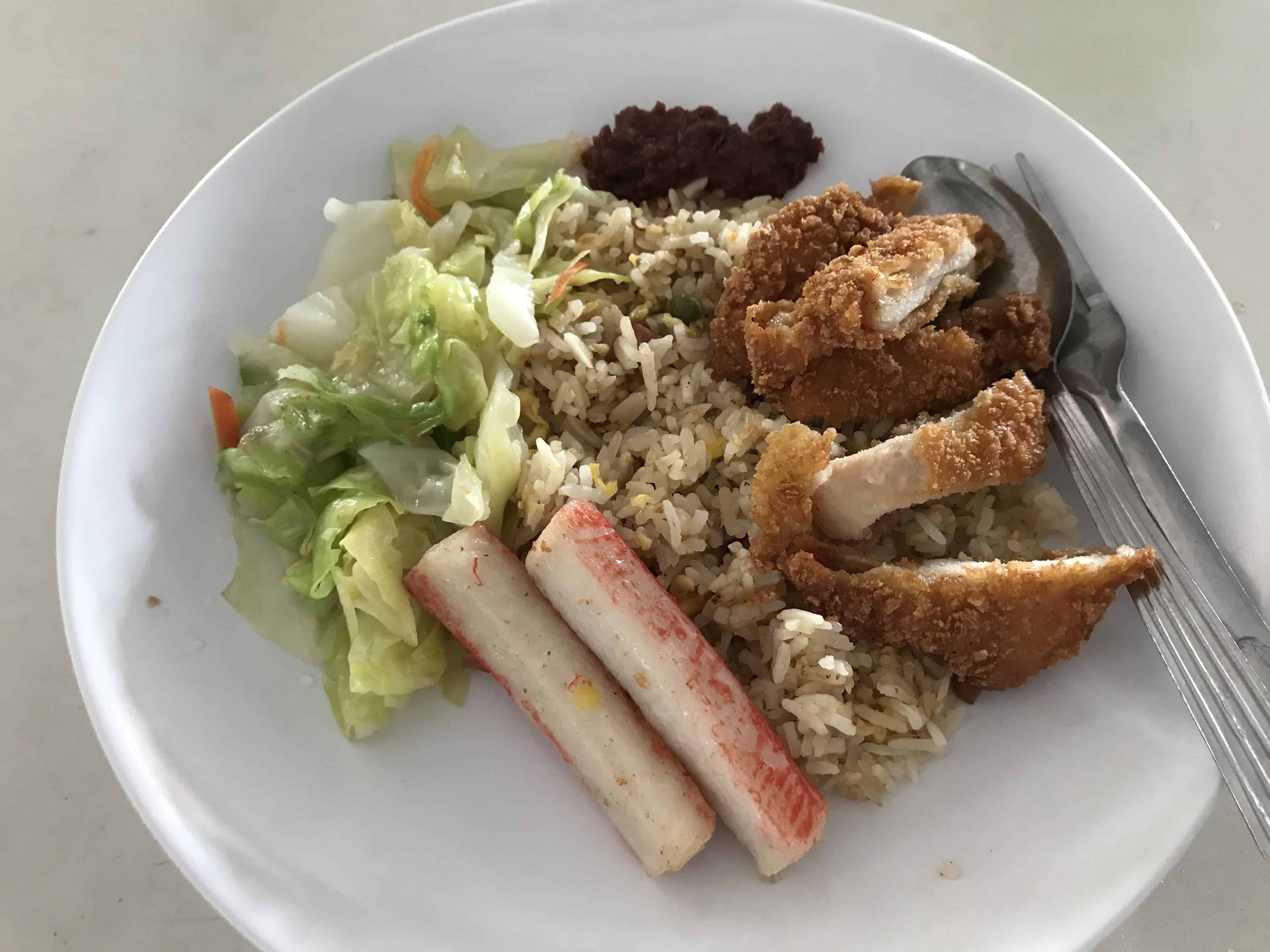 Dinner: Economy Rice (Cai Png), $3.20
Dinner: Economy Rice (Cai Png), $3.20
When on a budget, we can always turn to Cai Png, which is sometimes called Cai Fan. Prior to this week, Cai Fan was seldom my first option, as it seemed rather unattractive and plain. A closer look (and taste) at Cai Fan this week made me rethink all of that.
For one, Cai Fan stalls offer a myriad of dishes to choose from: meats, vegetables, fish and eggs. Many Cai Fan stalls offer similar dishes, so you should be able to find your steamed egg and har jiong gai (prawn paste chicken) at almost every coffeeshop or hawker centre.
Wednesday
 Lunch: Subway sandwich (Meal comes with drink and 1 cookie), $5.90
Lunch: Subway sandwich (Meal comes with drink and 1 cookie), $5.90
Still feeling guilty over my food choices of yesterday, I tried to make up for it with a 6-inch Subway sandwich filled with veggies. Adding to the usual lettuce, tomato and cucumber trio, I asked for capcicums, onions and olives, which are apparently super healthy.
With daily special meals at $5.90, a meaty sub topped with a generous serving of vegetables could work for dinner as well.

Dinner: Omurice, $4.50 ($5.50 for public)
Not all Japanese cuisine will burn a hole in your wallet. I had lunch at FoodClique, the food court in Utown (NUS), and was pleasantly surprised by the quality and portion of food served.
The omurice came with chicken katsu (cutlet), a perfectly made omelette, brown rice, a small side salad and miso soup with seaweed. Carefully balancing carbs, protein and fat, it’s almost hard to believe the restaurant-standard of this satisfying meal.
Thursday
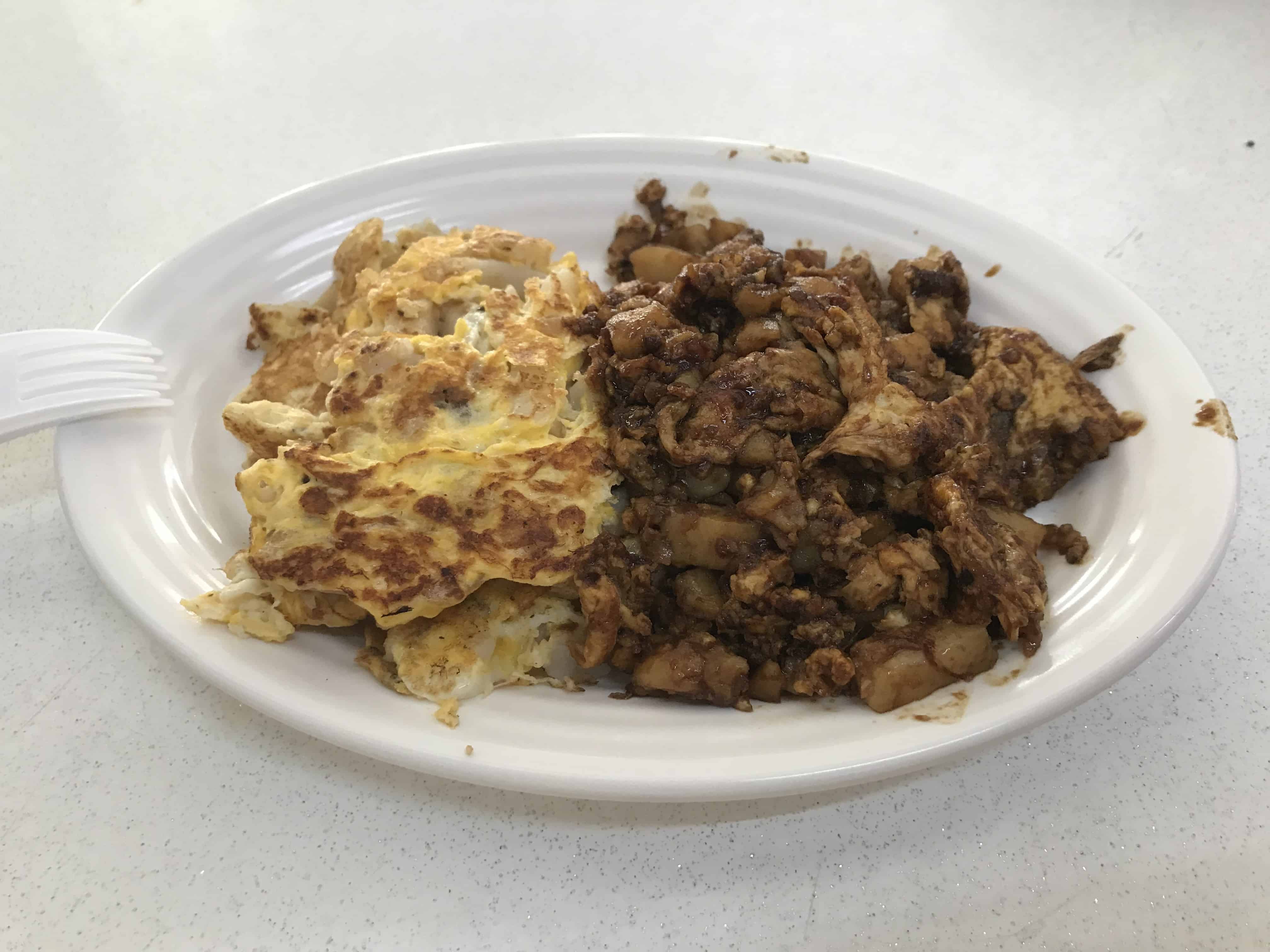
Breakfast: Carrot Cake, $4.50 (Shared between 2 people)
While most places serve either white or black chai tau kuey (carrot cake), the coffeeshop at Block 446 Ang Mo Kio gives you the best of both worlds.
The generous portion was shared between 2 people, cutting my breakfast cost to $2.30. A plate of cai tau kuey is often priced at $3, and makes a decent breakfast, albeit not the healthiest one.
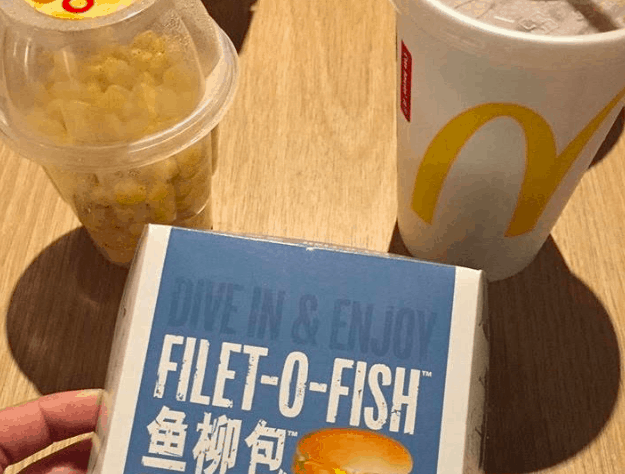
Lunch: Fish burger, McDonalds, $5 (Set meal)
For lunch, I indulged in some fast food: Fillet-o-Fish ($2.50 ala carte), which usually comes with a packet of small fries and a drink. I requested for a cup of corn instead of fries, just so I could feel a little less guilty. Otherwise, this would be perfect for cheat days!
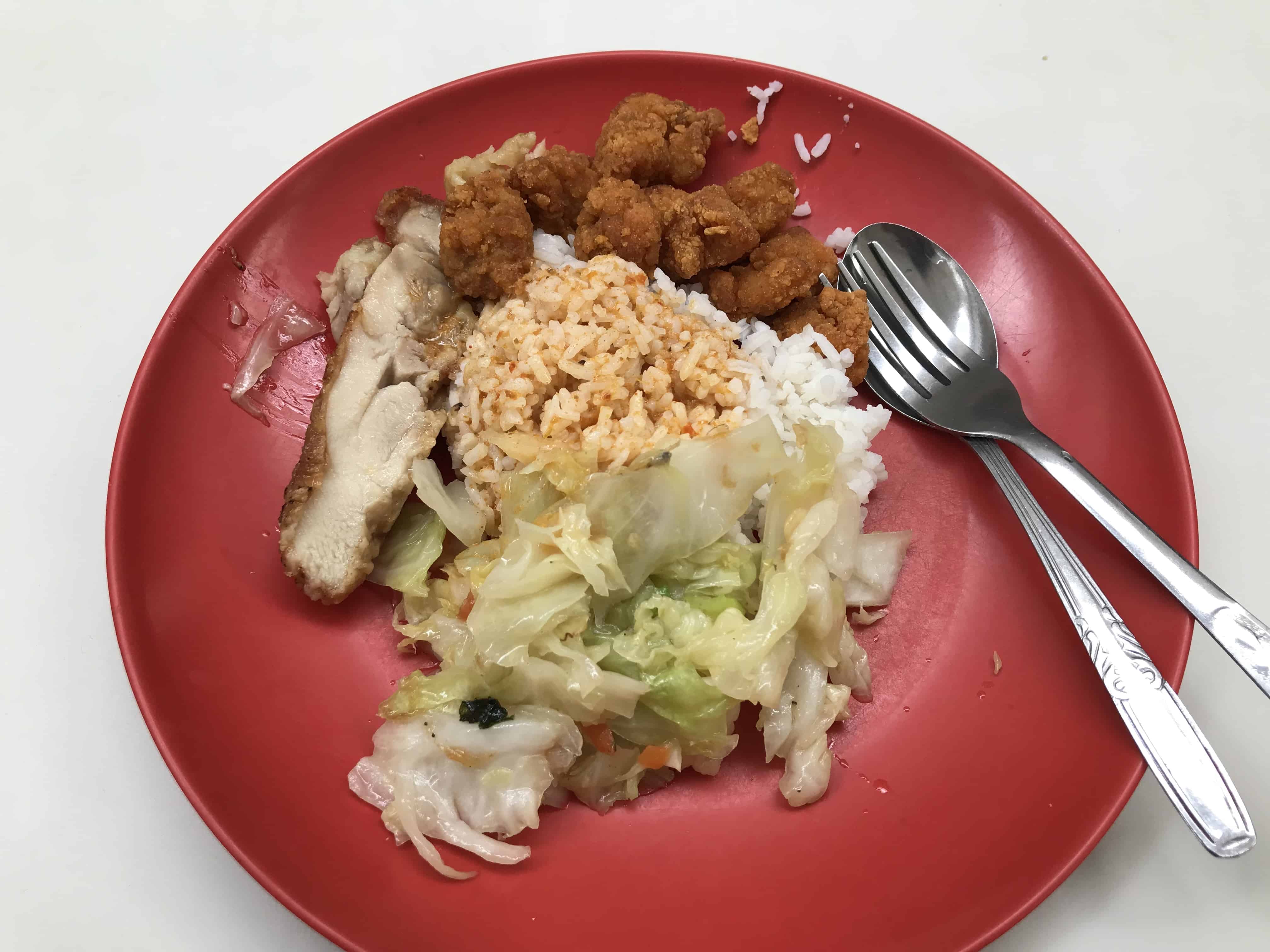
Dinner: Cai Fan, $3.50
Another day, another Cai Fan. I have to say, a scoop of curry really makes all the difference! Don’t forget to ask your friendly Cai Fan seller for some curry or gravy the next time you order mixed rice.
Friday
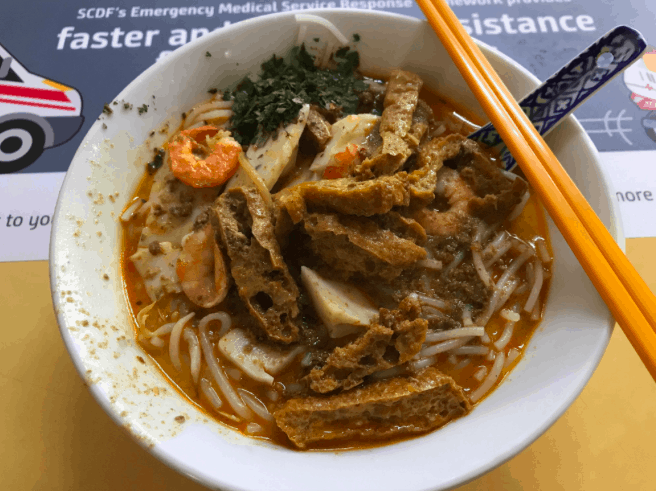
Breakfast: Laksa, $3
My tolerance for spicy food is pretty low, but for tasty Laksa with good broth, I’m willing to take on the challenge. Luk Ming Toa Payoh Laksa makes the perfect Singaporean breakfast, rivalled only by teng chai chok (Boat Congee) and you tiao (fried dough sticks).
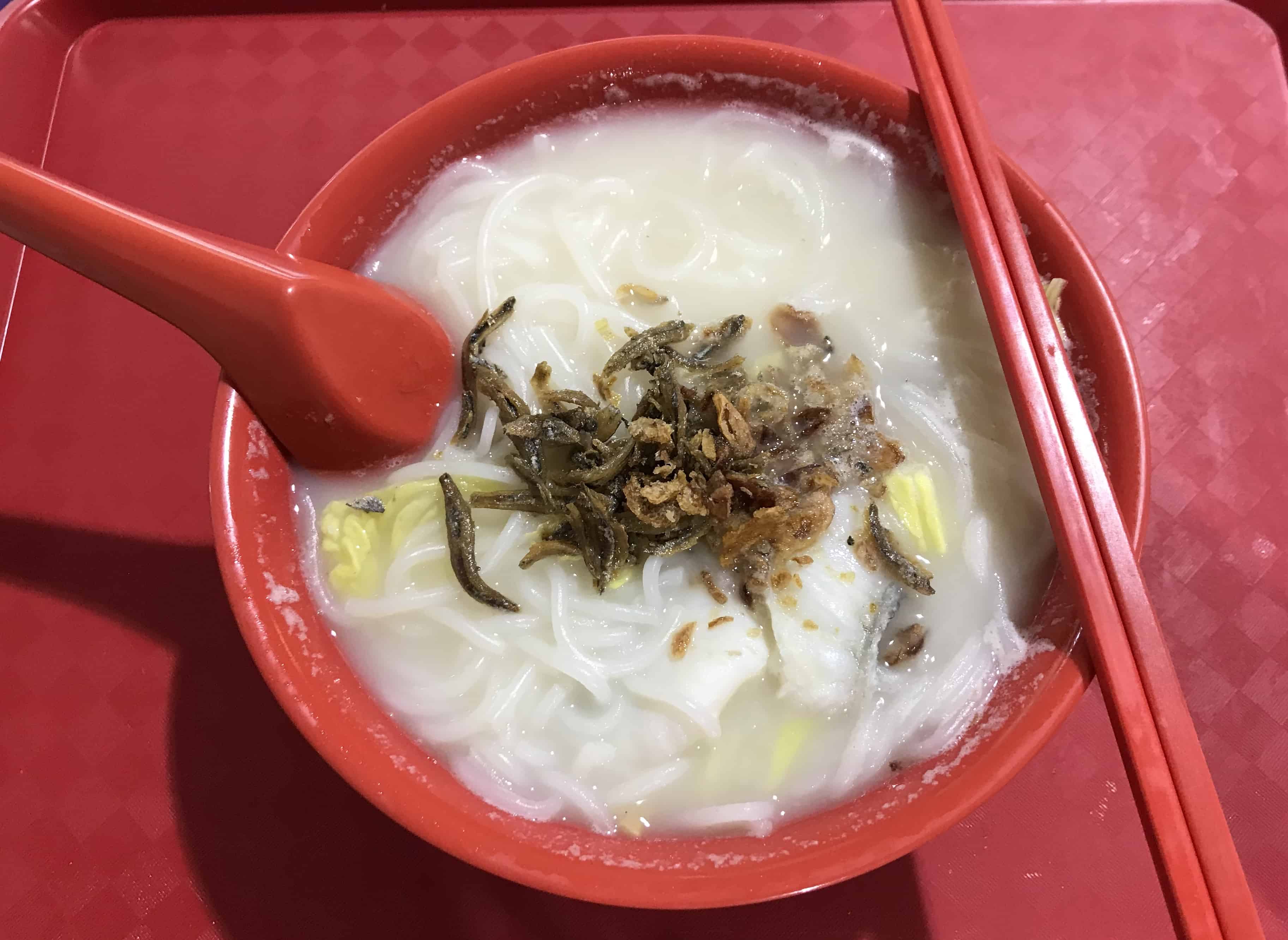
Lunch: Fish Soup Noodle, $3
One of my favourite rainy day foods, fish soup noodles can be found in almost every coffeeshop. Served with velvety white fish or crunchy fried fish (or a mix of both, if you wish), fish soup noodles make a pretty satisfying lunch. Sliced white fish and soup are a pretty healthy option, making it the perfect lunch for those counting the calories.

Dinner: Bibimbap, $5
I’m back at Hwang’s, the Korean eatery where I had my ramyun. This time, I ordered the Bibimbap, which comes with a variety of vegetables, eggs, soup and 2 side dishes. This meal offered hints of sweetness and spice, quite accurately encapsulating my experience for the week.
Final Thoughts
Throughout this experiment, I only took into account the cost of meals, while other living expenses like transport were not included.
With a cap of $10.40 a day, I found myself constantly calculating my expenses and comparing prices. This experience helped to shed light on my eating habits and revealed some interesting trends in food prices in Singapore.
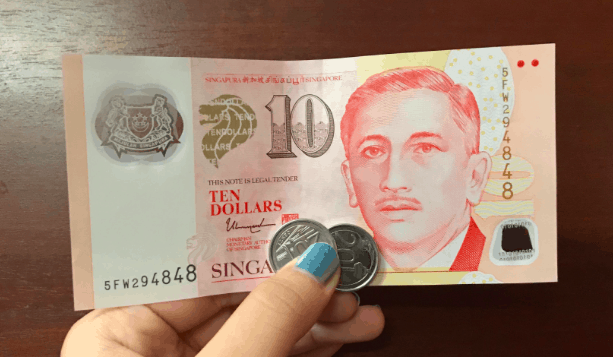
One week of closely tracking my food expenditure was still manageable – after all, I was in school most of the time.
However, it’s hard to imagine how challenging it must be for those who face such constraints every single day, for years. On top of these daily costs, they have to pay for utility bills and any unexpected medical expenses.
In this article, I have adopted a light-hearted manner in presenting my week’s experience, but I hope to highlight the fact that this is a daily reality for many who may be unseen and unheard.
I challenge you to take on this experience for yourself, and do what you can to make our society a little more empathetic and inclusive.







